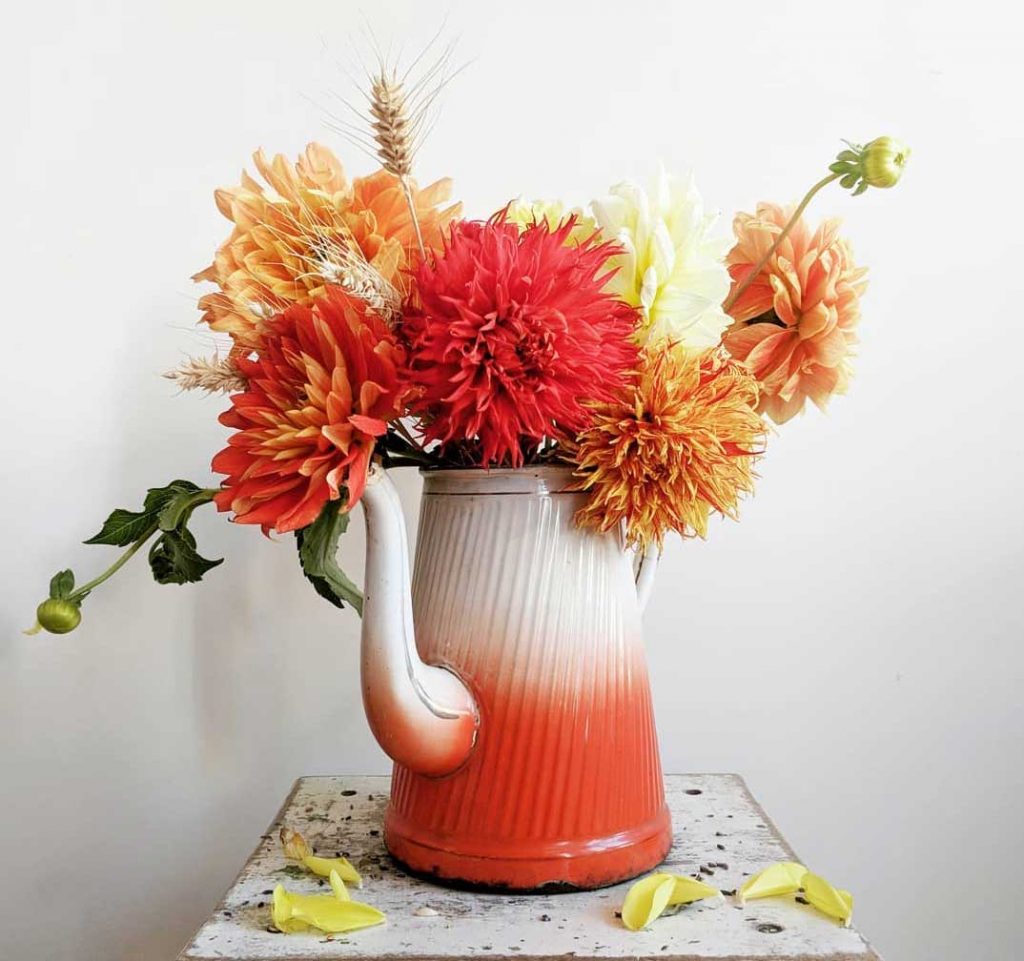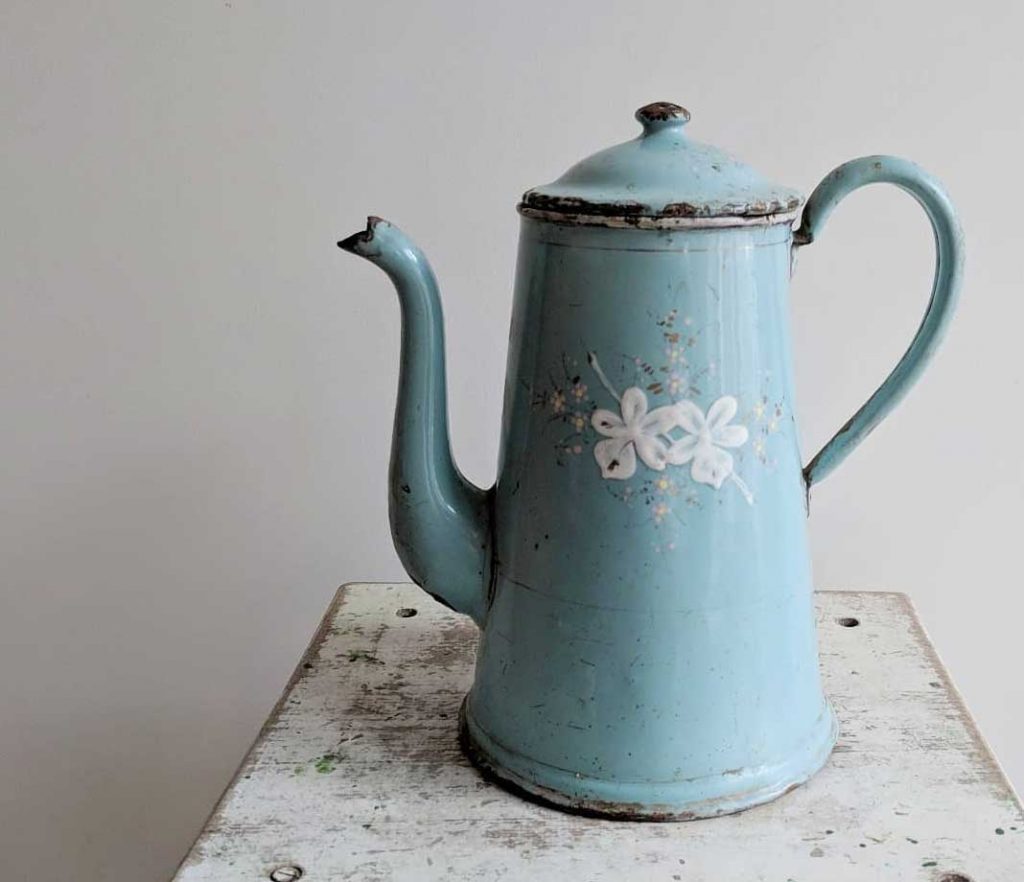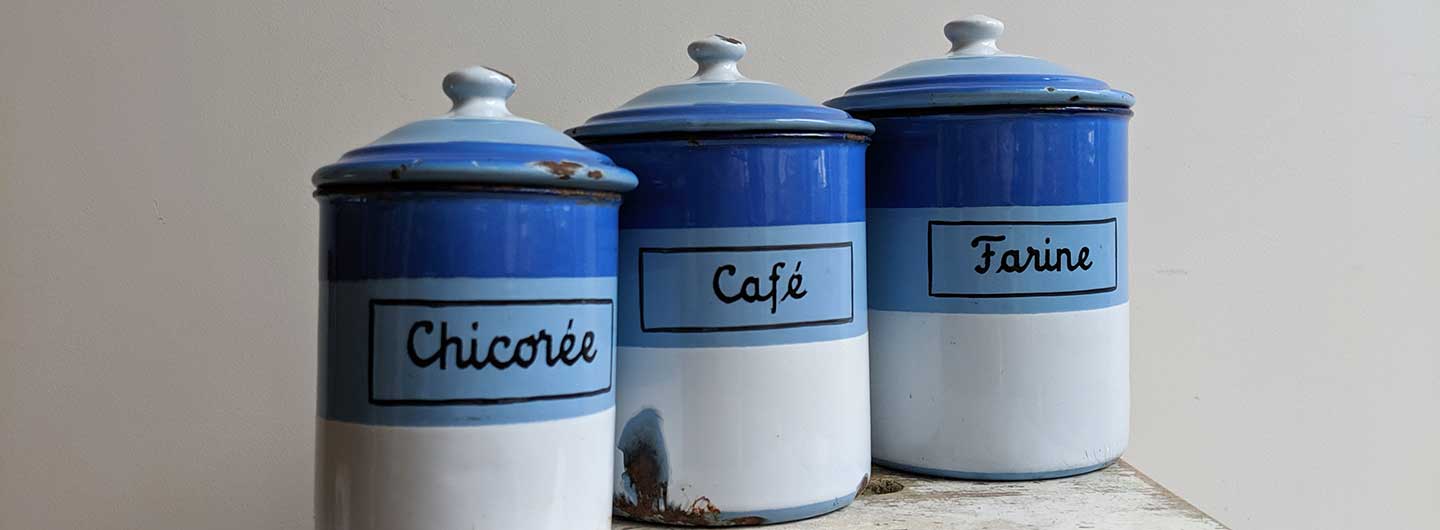Vintage enamelware is a treasure of French country life. The same way that lemonade in a Mason jar speaks to American vintage style, enamelware is all about sun-filled days in Provence, sunflowers gathered in an enamelware coffee pot or water pitcher. It’s an indelible part of French heritage.
Enamelware — better known as its near-equivalent graniteware in the U.S. — has been a staple of the French country kitchen for over 100 years. (It continues today, as you’ll know if you’ve ever seen an enameled cookware set or stock pot from Le Creuset — still one of France’s most popular kitchenware brands.) Enamel-coated metal kept cold drinks cool and hot drinks hot. (Very hot! Watch out when cleaning — which is otherwise easy to do, with hot, soapy water.) It was called into service to perform a million functions, from serving coffee (these pieces are known in France as cafétières) to acting as a soap dish to doing their part for kitchen storage — especially for spices, flour, sugar, and other household staples. In a French kitchen during the early 20th century, the colander, kettle, dish pan and kitchen utensils — even the ladle — were likely all made in enamelware.

Here, I’ve collected my favorite enamelware pieces from across France: cafétières, milk pails, water jugs, saucepans, storage containers, and more, all lovely additions to a vintage kitchen. Pieces that have seen a second life as a vase are the easiest to find — it’s rare that I’ll see more functional sorts of stovetop enamelware, like a sauté pan or soup pot, though I do see them from time to time.
The most common color for vintage enamelware is white — after that, white and a bright, cobalt blue (often used as an accent, though you’ll sometimes see black trim as well), and then a warm, vintage red, though I occasionally still see pink, yellow, and green enamelware. I rarely see wide, solid stripes — though if I do, it’s always in a tea pot. My favorite patten is “mottled“, and then a veined, marbled design or a honeycomb. I also love lightly speckled enamel ware, and pieces in really intense, mixed-up colors — this is often called an “end of the day” pattern, as pieces were literally colored in all the colors left over at the end of the day. (If you see this, buy it! And send me your price! I love it.) American granite ware is often in much brighter colors: emerald, sapphire blue, bright orange. The condition is largely more a result of how it’s been stored than its actual age — I’ve seen 100-year-old pieces in a pristine state, while a piece half that age has been chipped to death.

There’s no easier way to channel French farmhouse style — or bring a bit of flower-y color to a white kitchen — than with vintage enamelware. A vintage coffeepot with a bouquet of dahlias is a lovely addition to the tabletop, while an enamel ware salt box can be used to collect anything from keys to washi tape. Spice canisters, meanwhile, can serve as art supply holders or even a home for succulents (just be sure to leave space for the plant to drain properly).
While enamelware is a centerpiece of a French farmhouse kitchen, I don’t consider these pieces to be food safe. There’s nothing I love more than vintage enamel sauce pans hanging decoratively over an oven or a cafetiere , but I use them as just that — decor — rather than serveware. That said, new enamel pieces are regarded as exceptionally safe and a good alternative to plastic, so don’t let this advisory keep you from enjoying, say, a new set of enamel mugs or cereal bowls.
